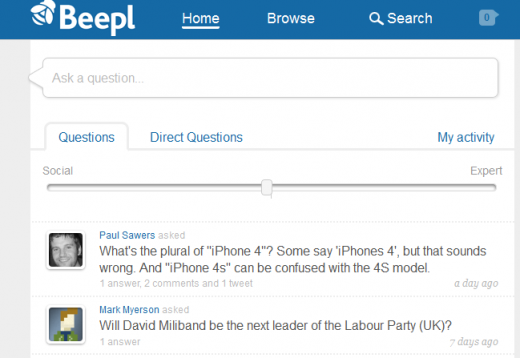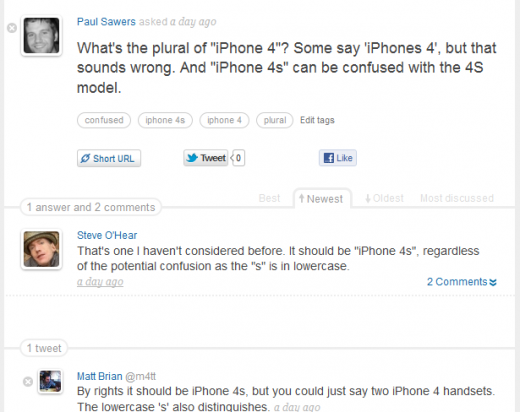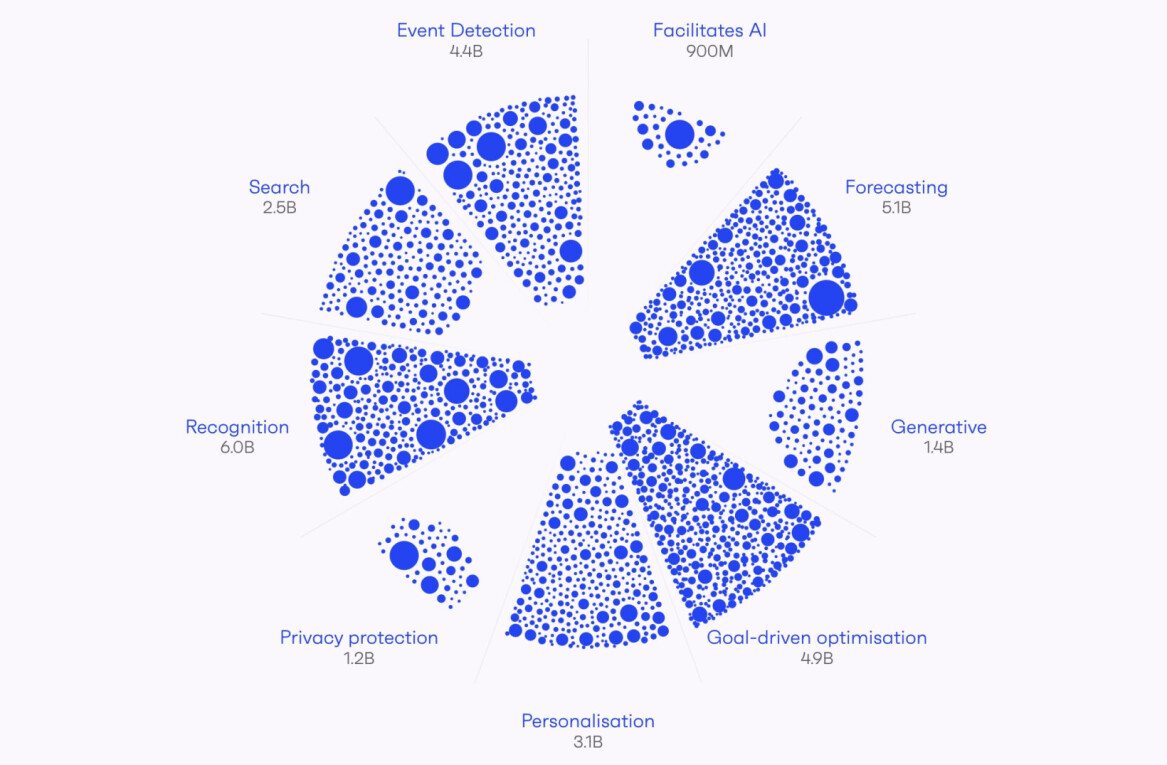
If you’ve followed the European startup scene for a while, you may well have encountered Steve O’Hear‘s work before.
The former TechCrunch Europe writer swapped blogging for business back in June 2011, and he is now CEO and co-founder of Beepl, a new ‘expertise platform’ that seeks to marry questions with answers.
Beepl opens to the public today, following a private 3-month alpha period. The Q&A site lets users seek answers and opinions on any subject from specialists and enthusiasts in any given field, and taps their social graph to ensure the right people are being asked the right questions.
Steve says that Beepl understands the topics that questions relate to, as well as users’ interests and expertise, so that questions automatically reach the best people to answer them. Furthermore, the more you use Beepl, the better it will get, as its “bespoke semantic engine adopts natural language-processing and machine learning to create a real-time network of experts.”
It’s this engine, and Beepl’s ability to learn as more content is populated, that Steve says differentiates it from other Q&A sites such as Quora, an obvious comparison and one that can’t be ignored. Indeed, Steve confirmed that Beepl is fending off comparisons with Quora, so I asked him what he felt the main differences are.
It seems the underlying belief from the Beepl team is that it’s smarter than Quora – topics follow users rather than the other way around. “We do love Quora, but they come from a different philosophical point of view,” says Steve. “They said they originally wanted to be sort of like a Wikipedia entry for things that don’t get a Wikipedia entry. Also, Quora has moderators, and you can’t ask the same question twice. We’re much more about the real-time, here and now, and we don’t mind a question being asked time and again, because it may have slightly different context or meaning,” continues Steve. “We also have Twitter integration. We are more of a social media platform than a Q&A repository.”
In its alpha phase, Beepl has notched up “hundreds” of users so far, a figure Steve says he hopes will grow significantly when it launches properly today. “We have quite a big road map for Beepl, it hasn’t yet been tested out in the wild,” he says. “But we’re flattered by the Quora comparison.”
Naturally, acquiring users is the company’s main goal for now, but with Steve’s experience of writing about startups, he knows that Beepl has to bring something new – and useful – to the table. “It has to provide some utility,” says Steve. “Knowing what features to leave out rather than what to put in was crucial. But keeping it useful is our focus.”
Also, whilst Beepl will display in your mobile browser, it isn’t optimized for the screen size and Steve says proper attention to mobile is imminent, with a prototype HTML5 app on the cards “ASAP”, and native apps to follow.
How it works

To properly interact with Beepl users must connect with Twitter and/or Facebook. They can then go into their profile settings and connect their LinkedIn account, which is certainly a good move. Beepl analyses these social media profiles to help supplement a user’s interest graph on the platform. For example it looks at Facebook Likes, LinkedIn Skills, and recent tweets, so that they can view and answer questions most relevant to them.
Each user will see a different screen when they log in, because the stream of questions on their Home tab will be tailored in accordance with the data it gleaned form their social profiles. There is a slider too that you can be swung from ‘social’ or ‘expert’, which effects the type of questions you see in your stream:

Each user is awarded a ‘Beepl Rank’ too, which is an algorithmically-defined score based on their overall Beepl contribution, relative to the rest of the community. This is displayed on their profile page.
If you’re looking to ask a question, it’s pretty straight forward. You have 140 characters to play with, and you can choose to restrict your question to Beepl users, or broadcast it across the Twittersphere. Whilst this is obviously beneficial for users with many Twitter followers, those with a low Twitter follower count still benefit as their question still broadcasts through the Beepl network.
I asked a sample question which received two responses, one from a Twitter follower and one from a Beepl contact. As you can see, both answers appeared in-line below the question:

As Steven has noted already, the whole notion behind Beepl is that people don’t follow topics…topics follow people. So Beepl learns what people are knowledgeable about through looking back at previous tweets and updates, and pulls in relevant questions and directs them to the right people.
“The way I see this so far is that you can post a question directly to LinkedIn, but with Beepl it pulls together all your social and interest graphs to help get your answers,” says Steve.
It’s definitely an interesting proposition, and it’s one we’ll be keeping an eye on over time to see how the platforms ‘learns’ and evolves.
Meet the team
As we’ve noted already, Steve O’Hear is the CEO and co-founder of Beepl, but then there’s also Jan Paricka (CTO) who bootstrapped the company up until its investment (see below), Pete Harris (UX), and Rosie Svaskova (Community Manager).
Beepl was founded in the UK in April last year, with headquarters in London and an office in Prague. In July 2011 it secured its first funding round, garnering a ‘six figure’ seed investment by Prague-based Credo Ventures, a VC fund targeting early stage technology companies in Central and Eastern Europe (CEE).
Whilst it’s still early days, Steve says initial feedback has been largely positive, citing the site’s user experience, real-time and semantic technology as strong points. But I was curious to delve a little into Steve’s motives behind the move, leaving behind a career in tech-blogging to launch a new working life on the other side of the fence.
“I went in to this with my eyes wide open,” says Steve. “Yes, it’s less glamorous than blogging, but one of the biggest surprises has been how much help I’ve been offered by the wider startup scene.”
So does Steve feel that his previous experience covering startups will stand him in good stead for startup life? “I’d hope not to make the common mistakes,” he says. “But I’m careful not to think I know it all just because I’ve written about it.”
“However, I think I bring good analysis and communication skills to the table,” he adds. “Not just from a PR perspective though, but also when talking to investors and such like too.”
Now, all we’re waiting for is the word ‘beep’ to organically enter common parlance for when you ask or answer a question on Beepl. That’s as good a benchmark as any to measure the platform’s success…
➤ Beepl
Get the TNW newsletter
Get the most important tech news in your inbox each week.




